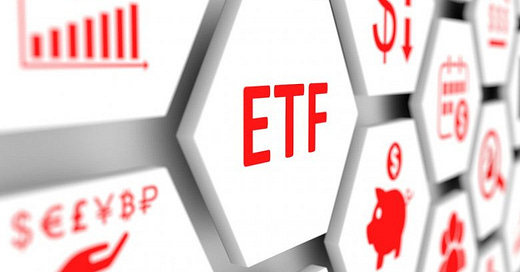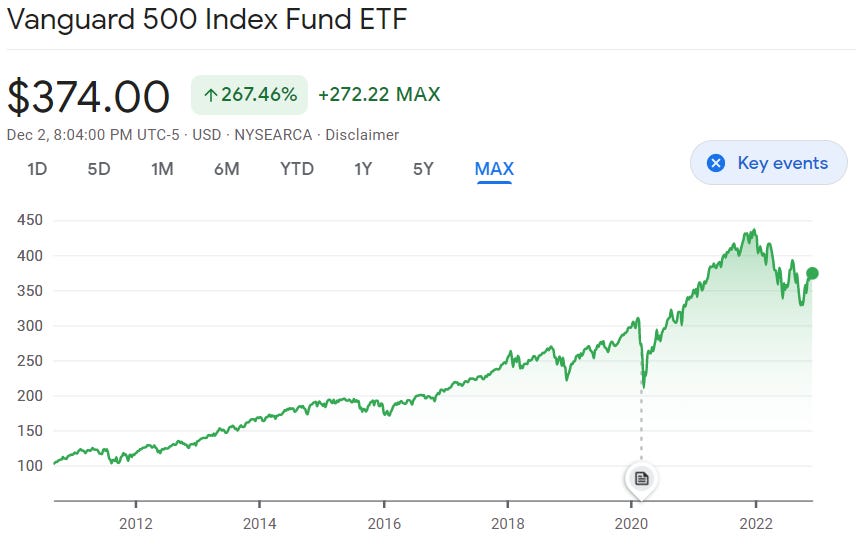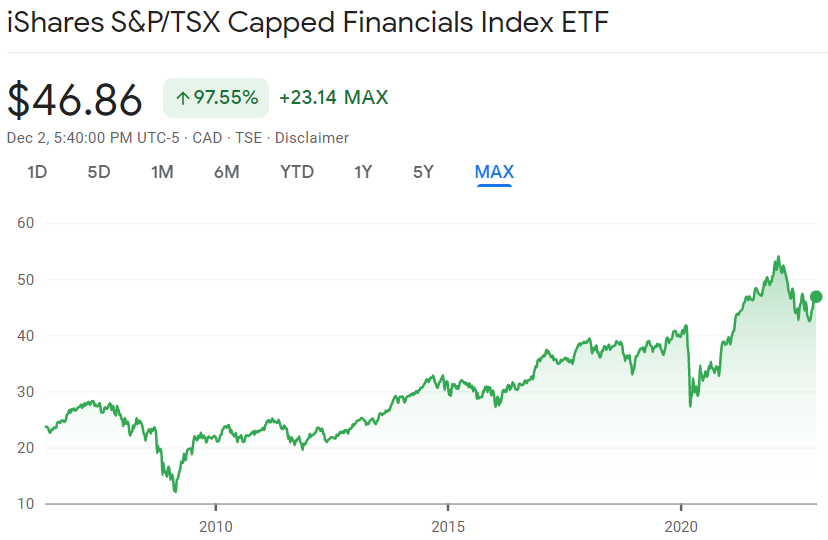5 Best Canadian ETFs to consider for your portfolio
ETFs can make you quite wealthy in the long run
ETF (Exchange traded fund) are a great option to start building your investment portfolio and invest for the long term without worrying about the day-to-day stock market volatility.
An investment in a ETF (Exchange traded fund) is a bet on capitalism and on the economy of the country where the ETF majorly invests in.
Consider this.. if you invested $1000 into the Vanguard 500 Index ETF ($VOO) in 2010 you would be sitting on 4x returns right now.
The best time to start investing in a low cost ETF is NOW! Investing into an ETF is all about dollar cost averaging and let it run for the long term.
If you have some surplus cash, the next best time to invest in a ETF is when its off its all time high to further bring down your cost.
But I bet you probably already know all the advantages of ETFs so lets get straight to the main topic of this post.
5 Best Canadian ETFs to consider for your portfolio
Canadians have a lot of ETFs to choose from. Here are my top recommendations all of which are rated 4 star and above and charge low expense ratios.
1. Vanguard S&P 500 ETF ($VFV.TO)
The fund seeks to track, to the extent reasonably possible and before fees and expenses, the performance of a broad U.S. equity index that measures the investment return of large-capitalization U.S. stocks.
Currently, this Vanguard ETF seeks to track the S&P 500 Index. It invests directly or indirectly primarily in stocks of U.S. companies.
Morningstar Rating ★★★★
Expense Ratio - 0.09%
Turnover Ratio - 4.8%
2. Vanguard US Dividend Appreciation ETF ($VGG.TO)
The fund seeks to track, to the extent reasonably possible and before fees and expenses, the performance of a U.S. equity index that measures the investment return of common stocks of U.S. companies that have a record of increasing dividends over time.
Currently, this Vanguard ETF seeks to track the S&P U.S. Dividend Growers Index (or any successor thereto). It invests directly or indirectly primarily in stocks of U.S. companies.
Morningstar Rating ★★★★★
Expense Ratio - 0.3%
Turnover Ratio - 6.6%
3. iShares S&P/TSX Capped Financials ETF ($XFN.TO)
XFN seeks to provide long-term capital growth by replicating, to the extent possible, the performance of the S&P/TSX Capped Financials Index, net of expenses.
XFN primarily invests in equity securities issued by Canadian issuers participating in the financials sector.
Morningstar Rating ★★★★
Expense Ratio - 0.61%
Turnover Ratio - 84.5%
4. Vanguard FTSE Canadian High Dividend Yield ETF ($VDY.TO)
The fund seeks to track, to the extent reasonably possible and before fees and expenses, the performance of a broad Canadian equity index that measures the investment return of common stocks of Canadian companies that are characterized by high dividend yield.
Currently, this ETF seeks to track the FTSE Canada High Dividend Yield Index (or any successor thereto). It invests primarily in common stocks of Canadian companies that pay dividends.
Morningstar Rating ★★★★★
Expense Ratio - 0.22%
Turnover Ratio - 10%
5. iShares Core S&P/TSX Capped Composite ETF ($XIC.TO)
XIC seeks to provide long-term capital growth by replicating, to the extent possible, the performance of the S&P/TSX Capped Composite Index, net of expenses.
XIC primarily invests in Canadian equity securities.
Morningstar Rating ★★★★
Expense Ratio - 0.06%
Turnover Ratio - 81.1%
Summary
ETFs are a no-brainer to start your investment journey and provide the much needed stability to the overall portfolio and I believe the ETFs shared in this post will keep your portfolio in good stride for years.
Here’s a returns comparison of the 5 funds:
Needless to say, the funds from Vanguard have an edge in overall returns. That’s because of the low expense ratios, low turnover ratios and exposure to the US market.
Thank you for reading this article! If you liked it please hit the LIKE button.
Don’t forget to subscribe to get more such articles right in your Inbox. Subscription is FREE!
If you found this article useful, please consider sharing it.
I hope you got some value out of this article. Please feel free to share this newsletter with your friends or family.
Disclaimer: Please do not consider this post as an investment advice. I am not a registered financial advisor. Nothing in this article should be construed as an investment advice. Please consult a registered financial advisor before making any investment decisions.
Credits: Most of the content of this article is public information that can be found on news articles, government and company websites.











